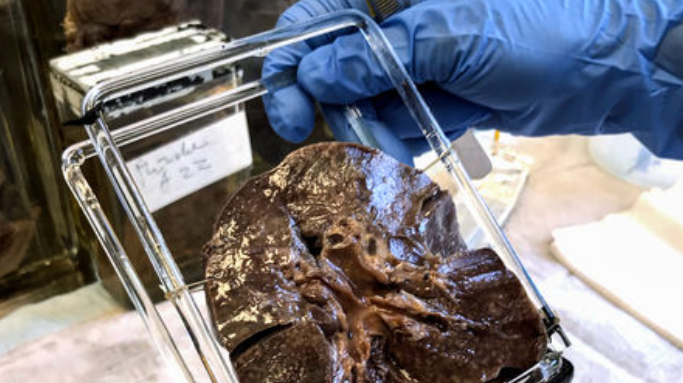Measles Virus Arose as Human Pathogen With Emergence of Large Cities

mage Courtesy: Science magazine. Image depicts Scientists assembled a measles virus genome from the preserved lungs of a girl who died in 1912
Measles is one of the most infectious human diseases across the world. In the year 2017 alone, measles has caused death of some 142,000 people. Every year, a significant size of population across the world suffers from measles virus attack. But one crucial factor is that measles virus causes a lifelong immunity. This means that the measles virus needs a sizable population of human subjects to avoid burning itself out. Scientists estimate that measles virus needs some 2,50,000 or half a million people to avoid extinction. Here comes the question that has been intrigued pathologists, infectious disease historians and epidemiologists for long: How and when measles virus emerged as a human pathogen and where did it diverge from?
One latest research paper that has appeared in the pre-print server bioRxiv has shed light on the evolution and history of pathogenicity of the measles virus. The findings of the research reveal that measles virus may have entered human population in as early as 4th century BCE. Previous researches had estimated the time period of measles virus’s invasion on human population to be around 11th or 12th century CE.
The team of researchers inferred based on their analysis of RNA extracted from a lung that has been preserved at Berlin Museum of Medical History since 1912. On June 3, 1912, a two-year-old girl died of pneumonia following measles infection at the Charite University hospital. Doctors took out her lungs and preserved using formalin. After a century, Calvignac-Spencer, an evolutionary biologist at the Robert Koch Institute and his team took samples from the lungs and isolated the RNA from it.
“The work is technically brilliant. Just being able to get the measles virus out of these old, wet specimens. That sets the stage for all sorts of exciting work,” says evolutionary biologist Mike Worobey of the University of Arizona.
The earlier estimation of measles emergence was made by researchers from Japan where they concluded back in 2010 that measles did not emerge until 11th or 12th century CE. The measles virus has been found to be branched from rinderpest virus, the virus that causes rinderpest among cattle—cows, buffalos, goats etc. Rinderpest virus does not infect human beings. Hence, if the time of branching of measles virus from its ancestor can be estimated, then the time of its emergence as a human pathogen could also be determined. The estimation of The Japan researchers is based on the analysis of genomes of measles and rinderpest virus available till then. They built a phylogenetic tree, the evolutionary tree constructed to analyse the history of certain species and about the divergence from ancestor.
The main obstacle for a conclusive determination of the timeline of measles virus’s emergence as a human pathogen was the scarcity of its genome. Only three genomes before 1990 were known; the oldest being the one isolated in 1954, which eventually was turned into the first measles vaccine. The one that has been isolated by Calvignac-Spencer became the oldest one.
Calvignac-Spencer’s team built a new phylogenetic tree taking together the genomes from 1912 and that from 1960. Their resulting tree suggested that measles virus could have invaded human population as early as 345 BC. It was also the time when human populations reached the critical size that was estimated to be necessary for the measles virus to escape extinction.
Isolation from the lung tissues submerged in formalin was not an easy task. Formalin cross-links proteins and other large biomolecules like RNA and fixes the tissues and that’s how it stores it for quite a long time. The team had to put the tissues at 98 degree Celsius for over 15 minutes. This heating removes the cross linking, but this also breaks the RNA molecules. The team had worked to piece them together and sequence the fragments.
Get the latest reports & analysis with people's perspective on Protests, movements & deep analytical videos, discussions of the current affairs in your Telegram app. Subscribe to NewsClick's Telegram channel & get Real-Time updates on stories, as they get published on our website.














